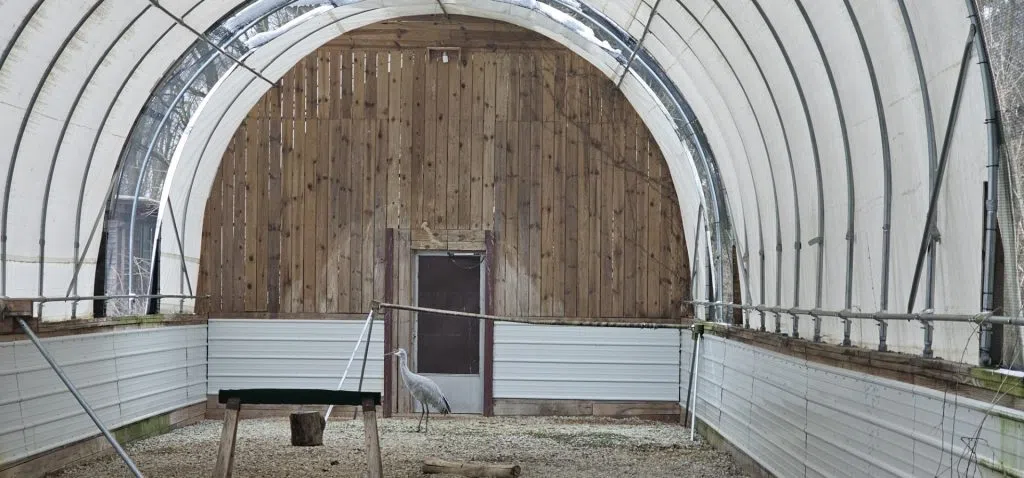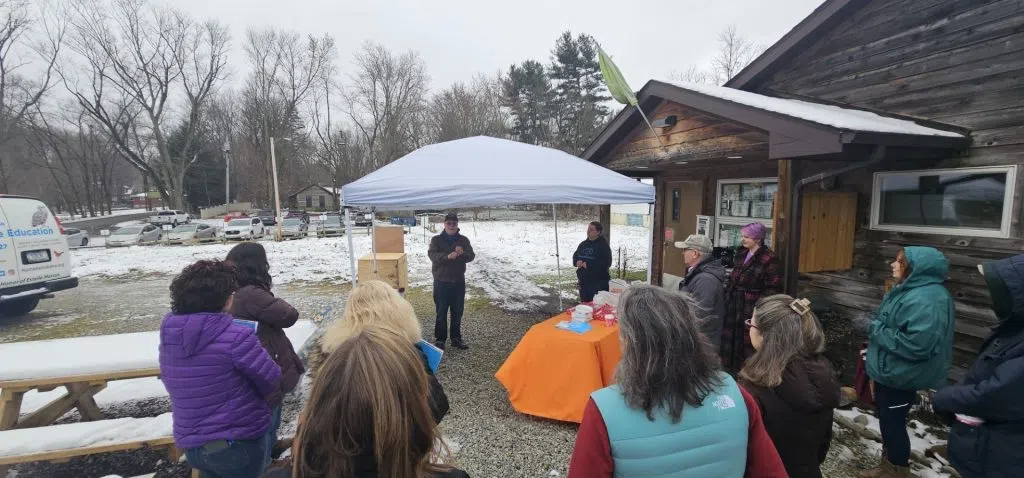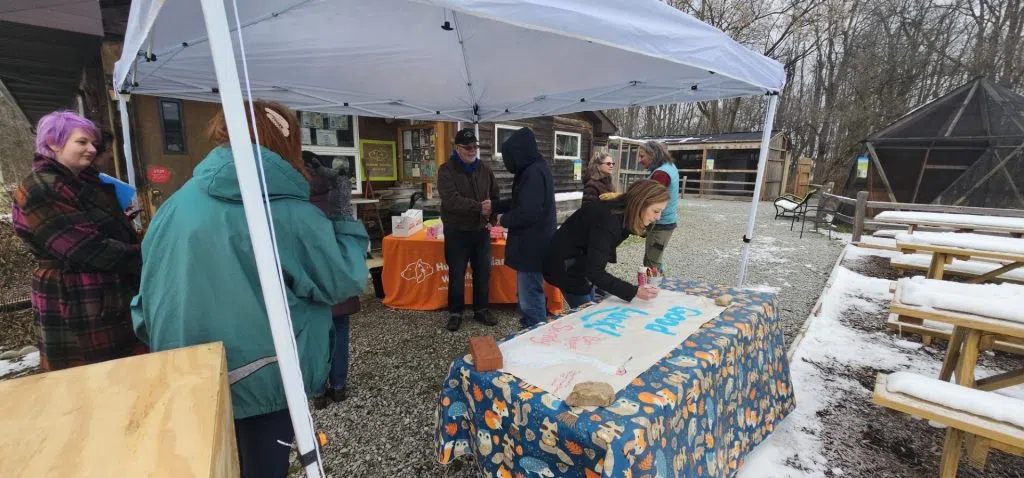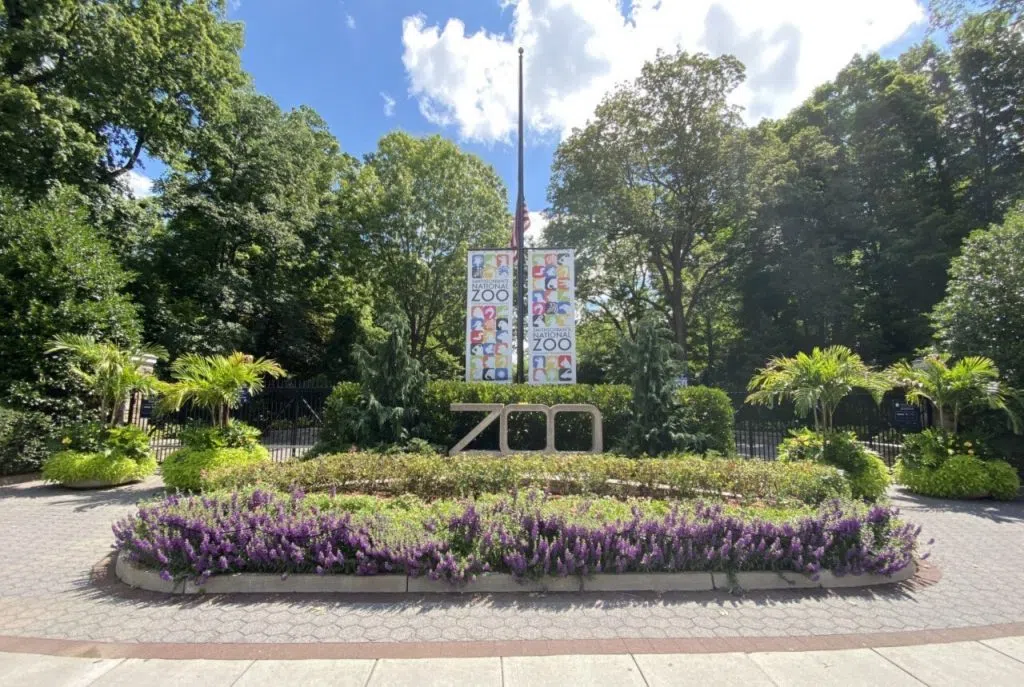A sandhill crane treated by Humane Indiana Wildlife in Northwest Indiana has a new home on the Eastern Seaboard. A news release says Sandy suffered an injury to her wing and had been in rehabilitation for five years at another wildlife center before being admitted to Humane Indiana late last year and it was determined the past injury resulted in her being unable to fly again. The Region-based nonprofit said sandhill cranes have extremely specific needs, a special diet and a yearning to be around other cranes, and the “optimal permanent home” they said needed to be found since she was unable to be released to nature; the Smithsonian National Zoo in Washington, D.C., Humane Indiana said, came to the rescue.

(Photo provided by Humane Indiana Wildlife)

(Photo provided by Humane Indiana Wildlife)
“This is an incredibly unforgettable moment,” expressed Brian Fitzpatrick, CEO of Humane Indiana, as he welcomed guests to the farewell celebration last month. “We are grateful to be a part of Sandy’s journey and to assist with placing her in an environment suitable for the distinct needs of a sandhill crane.” Members of the Humane Indiana team traveled ten hours to personally escort Sandy to her new home she’ll be sharing with two other sandhill cranes, among turkeys and geese, in an enclosure with a pond and a stream. During the send-off gathering, guests enjoyed coffee, donuts, and views of Sandy in Humane Indiana’s flight training enclosure. Guests also signed a ‘Bon Voyage’ banner for Sandy, writing good luck and well wishes for the crane whose story touched the hearts of so many. Representatives from Chesterton Feed and Garden and the Porter County Community Foundation were also in attendance.

(Photo provided by Humane Indiana Wildlife)

(Photo provided by Humane Indiana Wildlife)
A wildlife supporter built Sandy’s travel crate to precise specifications, using blueprints provided by the International Crane Foundation. Sandy navigated the journey with ease, bellowing the occasional resounding honk that is the trademark call of sandhill cranes, a news release said. “Due to her injury, Sandy had been in captivity for five years and was growing accustomed to being around people during this time. We knew a zoological setting would be the best fit for her, and I am overjoyed the Smithsonian could provide her with an appropriate home,” remarked Harmon. “The Smithsonian gave her a new lease on life.”

(Photo provided by Humane Indiana Wildlife)
“Facilitating the improvement of a wildlife animal’s circumstances is the ultimate reward. Partnering with an organization of the caliber and magnitude of the Smithsonian validates the hard work and dedication our team puts into each injured or orphaned animal, “Fitzpatrick added. “We are truly grateful to everyone who supported and donated to make Sandy’s positive outcome possible.”
“Sandy will always be in the hearts of wildlife lovers in Indiana, and she is now a national treasure, greeting visitors from around the world in the nation’s capital,” said the news release from Humane Indiana Wildlife.
The Humane Indiana Wildlife Rehabilitation and Education Center admits nearly 3,000 birds, mammals, reptiles and amphibians yearly. For information on how to contribute to the cost and care of wildlife species like Sandy, a sandhill crane, visit HumaneIndiana.org/wildlife-donate .










